#genbukan
Text
Edo had three great dojos during the Bakumatsu period:
Shigakukan (Kyoshin Meichi-ryu), under Momoi Junzo
Genbukan (Hokushin Itto-ryu), under Chiba Shunsuke
Renpeikan (Shinto Munen-ryu), under Saito Yakuro
It was said of the three great dojos that 位は桃井、技は千葉、力は斎藤 / Momoi has dignity, Chiba skill, and Saito power.
Some famous students of these (and their branch dojos):
Shigakukan
Takechi Hanpeita
Okada Izo
Genbukan
Kiyokawa Hachiro
Yamaoka Tesshu
Todo Heisuke
Sannan Keisuke
Sakamoto Ryoma
Renpeikan
Katsura Kogoro
Takasugi Shinsaku
Ito Hirobumi
#history notes#historical notes#history reference#historical reference#history research#historical research#kenjutsu#schools of swordsmanship#edo period#tokugawa period#bakumatsu period#genbukan#renpeikan#shigakukan
19 notes
·
View notes
Link
NINJA SELF DEFENSE TECHNIQUES 🥷🏻‼️ How To use KOSSHIJUTSU in a FIGHT: Taijutsu Training
#youtube#youtube shorts#ninja#ninjutsu#ninpo#ninja training#ninja technique#ninjutsu training#ninjutsu techique#taijutsu#ninpo taijutsu#budo taijutsu#bujinkan#genbukan#jinenkan#gyokko ryu#kosshijutsu#seito#martial arts#self defense
2 notes
·
View notes
Photo


Bansenshukan take place with Genbukan collection. Inspired by a mouvement of water. On sale at black hole hunter web place.
Join us on Facebook page of Black hole Hunter
PARIS/TOKYO
#luxury lifestyle#luxury clothes#luxury art#clothes#high fashion#black hole hunter#Streetwear#luxury street wear#bansenshukan#genbukan#paris#tokyo#techno#dance#fashion#shooting#edm#entertainment#ninja#ninja lifestyle#art martial#soldier#stylism#product design#ozersize#tshirt#jacket
1 note
·
View note
Text
List of swordsmanship schools at the end of the Edo period! Dojos where swordsmen such as the Shinsengumi and Takasugi Shinsaku studied
What kind of swordsmanship were the Shishi and Shinsengumi practicing at the end of the Tokugawa shogunate?
A brief summary of the main schools and who studied in them.
Shindo Munen-ryu
Shindo Munen-ryu was founded by Fukui Hyoemon in the Genroku era.
"Peace" was their principle. It was forbidden to solve problems unreasonably with swords, and academics were also emphasized .
Saito Yakuro's dojo, Renpeikan, was famous as one of the three major dojos in Edo at the end of the Tokugawa shogunate.
Who studied the Shindo Munen-ryu?
Egawa Tarozaemon: Shogunate official
Katsura Kogoro: Choshu Domain
Takasugi Shinsaku: Choshu Domain
Inoue Mita: Choshu Domain
Ito Hirobumi: Choshu Domain
Shinagawa Yajiro: Choshu Domain
Nagakura Shinpachi: Shinsengumi 2nd Squad Captain
Fujita Toko: Mito Domain, scholar
Katsura Kogoro was convinced to study this style when he heard that Shindo Munen-ryu swordsmen valued peace and used their swords as little as possible.
He served as the head instructor of the dojo for five years from Kaei 5 to Ansei 4, and his ability was also well documented.
As you can see, the Renpeikan was a dojo with many Choshu clan students.
On the other hand, Nagakura Shinpachi, who is said to have been the strongest in the Shinsengumi, also practiced the same style. However, he went to the Gekikenkan instead of the Renpeikan.
[T/N: Isn’t Serizawa also Shindo Munen-ryu? I guess he didn’t take its teachings to heart 😅]
Hokushin Itto-ryu
The Hokushin Itto-ryu was new style at that time, and was founded by Chiba Shusaku in Edo in the 5th year of Bunsei. Genbukan, one of the three major dojos in the Edo at the end of the Edo period, had more than 6000 students.
Since the Hokushin Itto-ryu was newly established, it adopted a rational tactic that was not bound by the old ways. There were no moves like exaggerated deadly sword attacks. It emphasized actual battle.
Who studied the Hokushin Itto-ryu?
Sakamoto Ryoma: Tosa dappan
Kiyokawa Hachiro: Shonai Domain
Ito Kashitaro: Shinsengumi
Todo Heisuke: Shinsengumi
Sannan Keisuke: Shinsengumi
Yoshimura Kuniichiro: Shinsengumi
Tennen Rishin-ryu
Tennen Rishin-ryu was founded by Kondo Tsukisuke during the Kansei era.
It was the Shinsengumi that made this style suddenly famous. Before, it was despised as a countryside swordsmanship style from Tama.
Most of the main members of the Shinsengumi were from this dojo, the Shieikan.
(On the other hand, I don't hear anything else about this dojo other than the Shinsengumi)
It was a sword that made enemies tremble in Kyoto at the end of the Tokugawa shogunate. The idea was to focus on actual battles and win no matter what kind of tactics you use.
The Tennen Rishin-ryu took their fights seriously even in practice, and some moves involved suddenly slashing at the opponent’s legs.
Hijikata Toshizo kicking up sand to blind the enemy? He was really strong because he was not above using any method (this is not a real move from this sword style, but lol).
At the bloody end of the Edo period, it's no wonder that the Shinsengumi was strong when they used a style that focused on winning.
Who studied the Tennen Rishin-ryu?
Kondo Isami: Commander of the Shinsengumi
Okita Souji: Shinsengumi 1st Squad Captain
Inoue Genzaburo: Shinsengumi 6th Squad Captain
Yagyu Shinkage-ryu
Yagyu Shinkage-ryu was the Tokugawa clan’s style.
It was founded by Yagyu Ishifune Munetoshi.
It’s famous for the mutō (無刀取り) technique, where you can win without having a sword.
Who studied the Yagyu Shinkage-ryu?
Takasugi Shinsaku: Choshu Domain, Licensed
Katsura Kogoro: Choshu Domain
Kyoshin Meichi-ryu
The Kyoshin Meichi-ryu was founded by Momoi Hachirozaemon.
By the time his son Momoi Shunzo inherited the dojo, the Shigakukan became popular as one of the three major dojos in Edo .
In the Kyoshin Meichi-ryu, honor was especially important, and both Momoi Hachirozaemon and Shunzo were very strong swordsmen. Rather, they had strong personalities.
Who studied the Kyoshin Meichi-ryu?
Takechi Hanpeita: Tosa Domain
Okada Izo: Tosa Domain
It’s ironic that the Four Manslayers of the Edo period came out of the Kyoshin Meichi-ryu that emphasized honor.
At least, the famous ones in modern times are Takechi and Okada.
Nodachi Jigen-ryu
Nodachi Jigen-ryu was founded in 1822 by Kanetake Yakumaru as a branch of Jigen-ryu, and was also called Yakumaru-ryu.
It often appeared in the taiga drama Segodon. It’s the one with the strange battlecry, "Kieeeeeeeeeeeeeeeeeeeee!” lol.
It was said to be Satsuma's one-shot deadly sword style, and it was a style that pushed hard with power and spirit.
When training using tree branches, they scream “Kyaaa!!!!!” as they hit.
Their tactic was to jump before their opponent and slash no matter what happens. Don't hold back.
In this aspect, there’s something similar to Tennen Rishin-ryu.
This school was able to play an active role at the end of the Tokugawa shogunate, and had an obsession with slashing, instead of other moves.
As a side note, isn't that a little crazy to shout like that? People have also said that for a long time, and it seemed that even Shimazu Narioki, the lord of the Satsuma Domain, jolted up saying "They're like mad swordsmen".
Certainly, if you didn't know anything about them, you'd be surprised at their sudden scream lol
Who studied the Nodachi Jigen-ryu?
Nakamura Hanjiro: Satsuma Domain
Arimura Tsugusaemon: Satsuma Domain, Seichugumi
Oyama Tsunayoshi: Satsuma Domain, Seichugumi
Arimura Shunsai: Satsuma Domain, Seichugumi
Shinohara Kunimoto: Satsuma Domain
Togo Heihachiro: Satsuma Domain, Admiral
#swordstyle#tennen rishin ryu#hokushin itto ryu#shindo munen ryu#translated#translated from Japanese
17 notes
·
View notes
Photo
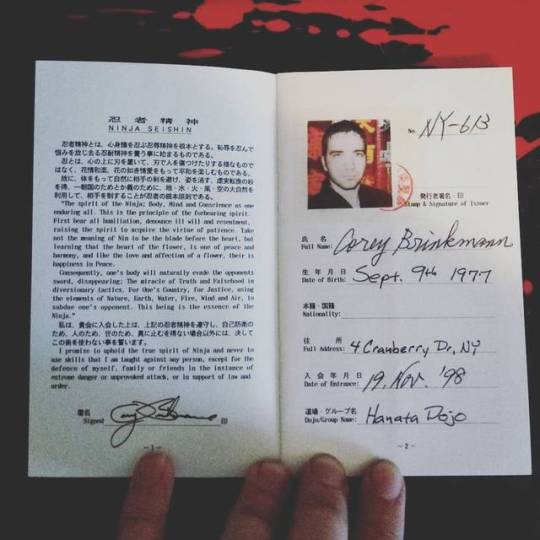
I found my old Genbukan Ninpo Membership book... Basically my ninja passport. #genbukan #ninpo #ninja #japan #nyninja
0 notes
Text
It’s All About You
Shinobi Science is all about you. It’s a learning methodologie to learn ninjutsu. It’s a scientific process to experiment with the principles found in kata models regardless of which ones you use. This is possible because the Shinobi Formula is an equation or more accurately a process that represents ninpo taijutsu the ninja body movements.
It doesn’t teach a curriculum, it teaches how to train, learn and explore the martial arts. How to move in gravity, how to unify your body to become its most effective weapon. It doesn’t matter if you train in the Bujinkan, Genbukan, Jinenkan, Myofu-An, To-Shin Do or any of the other ninja martial arts Shinobi Science makes it easier for you to unlock the secrets and principles of the art you study.
We look forward to training with you.
T
P. S, If you want to learn more about Shinobi Science click below.
https://www.shinobimartialarts.com/
0 notes
Photo
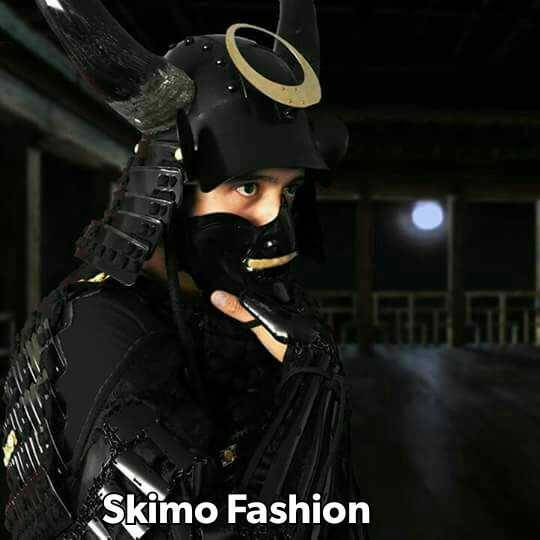
Queridos fashionistas en esta ocasión hablaremos de lo que es el ninjutsu.
Primero y antes que nada se debe de conocer la escritura y pronunciación la cual es muy importante puesto que se puso de moda gracias a un anime llamado Naruto en el cual y como en todo dan una mala información de las cosas al ser caricaturas.
Se escribe con N Nin no yi como muchos lo conocen escriben y pronuncian como yuyidsu palabra que no existe inventada por la gente popular y que gusta de hacer cosas por ser diferente y moda lo corecto es ninjutsu y se pronuncia como se escribe por ser una palabra japonesa de ahí se deriva la palabra ninja que asi se le dice al que lo practica pero ninja se pronuncia ninya y esto lo debes saber si te gusta esta arte marcial japonesa ahora va
Ninjutsu
El ninjutsu (忍術ninjutsu’), también conocido como shinobi-jutsu, y como ninpō (忍法ninpō’), es el arte marcial japonés del espionaje y la guerrilla.
Ninjutsu Otros nombres Ninpo, ShinobiTipo de arteTradicional Género con y sin armas Región Iga y Koga País de origen Japón proviene de antiguos clanes familiares creado por desconocido actualmente liderada por maestros M. Hatsumi y S. Tanemura Escuelas Bujinkan, Genbukan, Fudo, Koga, Manji, Nishi Tsushima den to ha kempo kai, To den Kaetsu ha kempo kai y otras especialidad combate en el suelo, con armas y sin armas, geografía, actuación, falsificación, farmacología, explosivos, esoterismo, espionaje, infiltraciones. Grado de contactosegún escuela emparentado con jujutsu tradicional, kobudojaponés.Deporte Olímpicono.
Este arte marcial, se basa en grupos de técnicas y tácticas (consideradas clásicamente 20, mencionadas más adelante) que han utilizado supuestamente los ninjadurante siglos. Los primeros datos que se tienen de la utilización de ninjas en el campo de batalla data del siglo V, lo que nos da una idea de la antigüedad de este estilo de lucha, que se complementaba con el aprendizaje de muchas habilidades útiles para el espionaje, como la caracterización o falsificación de documentos, así como ciertas prácticas esotéricas derivadas del Mykkyo, sistema espiritual japonés esotérico.
Con la llegada de Oda Nobunaga, los ninja fueron perseguidos en un intento de detener su creciente influencia y poder. Aunque esto provocó que algunos clanes ninja se extendiesen por todo Japón al tener que huir de Iga. Ya en el siglo XVII se utilizaron por última vez de forma masiva en la revuelta cristiana de Kyushu en 1637. A mediados y fines del período Edo, comienza el declive en el uso de los shinobi, dado el largo período de paz establecido por la familia Tokugawa. Entre los siglos XVII y XIX se prohibió legalmente el uso de los mercenarios ninja, lo que hizo que se utilizaran de forma clandestina y a escala pequeña.
En el siglo XX Japón utilizó el ninjutsu como forma de entrenamiento de sus tropas de élite.[cita requerida] No obstante eran tropas regulares dotadas de un entrenamiento especial, sin que se pueda llegar a considerarlos verdaderos ninjas. El último registro real sobre el empleo de los ninja por parte del gobierno japonés data de la segunda guerra mundial (1939-1945).
La internacionalización del Ninjutsu viene de manos del maestro Masaaki Hatsumi, heredero de nueve tradiciones marciales antiguas del Japón (Ryu), entre ellas tres de origen ninja, y seis de origen samurai.
Arte marcial
Las diversas escuelas de Ninjutsu que existen en la actualidad emplean mayoritariamente un keikogi de color negro o azul oscuro. Pese a la creencia popular, el tradicional traje negro con capucha del ninja del folclore es solamente un concepto popular, derivado de las ropas que empleaban los tramoyistas del teatro kabuki, para confundirse con el fondo de color oscuro. La utilidad de ese ropaje para pasar inadvertido se asimiló sincréticamente como parte del atuendo del ninja en el folclore japonés.
Las 20 disciplinas del ninjutsu (ninja no bugei ju happan)
El entrenamiento ninja clásico contempla, al menos a nivel histórico, el aprendizaje de veinte disciplinas.
Taijutsu: Manejo del cuerpo; movimientos, desplazamientos y combate desarmado.Kenjutsu: esgrima de sable, incluyendo la ninjato o shinobigatana.Bojutsu: técnicas de lucha con bastones de diversos tipos o tamaños.Hanbojutsu: arte de combatir con un báculo.Shurikenjutsu: lanzamiento, manipulación y combate con elementos cortapunzantes.Kusarijutsu: manejo de cadenas, solía usarse la Kusarigama, una hoz japonesa con cadena y contrapeso en el extremo o la Kusarifundo, una cadena extremadamente larga.Sôjutsu: manejo de lanzas.Naginatajutsu: uso de la Naginata, especie de alabarda en forma de espada curva con asta muy larga.Bajutsu: equitación, lucha y técnicas a caballo.Kuji Kiri: posiciones esotéricas de manos, las cuales según se decía dotaban al ninja de habilidades sobrehumanas.Suijutsu: nado, lucha, combate y técnicas en el agua.Kayakujutsu: fabricación y empleo de pólvoras y explosivos.Bo Ryaku/Kyojutsu Tenkan Ho: estrategia de engaño intercambiando lo verdadero y lo falso.Cho Ho: espionaje.Shinobi Iri: ocultación y camuflaje (en todo tipo de climas y ambientes exteriores e interiores).Inton Jutsu: infiltración.Henso Jutsu: caracterización, interpretación y disfraces.Ten Mon: meteorología.Chi Mon: geografía.Seishin Teki Kyoyo: desarrollo espiritual.
En cambio, las dieciocho habilidades del bujutsu samurái eran las siguientes:
Taijutsu: Combate sin armas.Kenjutsu o Kendo: Uso de la Katana o sable de bambú (shinai).Iai Nuki y/o Battojutsu: desenvaine y corte con la espada.Kusarijutsu: combate con cadenas, volvemos al ejemplo de la Kusarigama.Bojutsu: combate con bastones.Yarijutsu: combate con LanzaNaginatajutsu: uso de la Naginata, especie de alabarda en forma de espada curva con asta muy larga. Es más bien para las esposas de los samurái, pues no es común que estos la empleen.Kyokuten: combate en ambientes extremos.Suitonjutsu: natación, métodos de ocultación en el agua y uso de agua racionada.Bajutsu: técnicas para montar y combatir a caballo.Hanbojutsu: arte de combatir con un báculo.Yajutsu: técnicas de arquería.Yoroi Kumi-Uchi: combate usando armadura.Hojojutsu: técnicas con cuerdas, podría decirse que son técnicas de atadura.Juttejutsu: combate usando Jutte.Saiminjutsu: ilusiones (ilusionismos y prestidigitación).Shurikenjutsu: técnicas de lanzamiento de Shuriken, no es común para un samurái.Seishin Teki Kyoyo: desarrollo espiritual.
Como se puede ver, las habilidades del ninja son un refinamiento, o si se quiere una especialización de la forma de comprender el arte de la guerra del samurái. Esto nos acerca a una interrelación entre el ninja y el samurái, que lejos de ser similar a la que presenta la cinematografía, apunta quizá hacia una ósmosis, tanto a nivel de conocimiento, como de táctica y estrategia, e incluso de seres humanos. No en vano, famosos samuráifueron a la vez destacados ninja de clanes famosos, y viceversa. Incluso varias escuelas antiguas de tradición nítidamente noble, es decir, samurái, incluían el ninjutsu dentro de su programa, tanto en torno a la técnica como a las citadas táctica y estrategia.[cita requerida]
El Arte Ninja se complementaría con otros conocimientos propios de modernos agentes de campo, como los primeros auxilios, la orientación, conocimientos de alimentación muy particulares, técnicas para andar y desplazarse en silencio o transportando heridos, el empleo de armas ocultas o camufladas (las llamadas Kakushi Buki, y en definitiva todo aquello que fuese útil para su labor).
Por Tory Delarge♡
1 note
·
View note
Text
Todo Heisuke - 2010 Japanese Wiki Entry
From the Japanese-English Bilingual Corpus of Wikipedia’s Kyoto Articles . This is a translation from Todo Heisuke’s Japanese wiki entry, exactly as it was in 2010. It is taken from PNM0086 in that collection.
For information on the database and how to use it, please check this post.
Just like English wikipedia, none of this information is guaranteed to be accurate. It’s not a current version of the Japanese article either.
Todo Heisuke’s article here is full of speculation and theories, organized a bit hap-hazardly. All the speculation is unsurprising, given the rumours of his birth and his early death, without any family to keep his memory green. The last section, titled “Existence Theory” should really be translated “Survival Theory.” It’s a far-fetched theory that Todo Heisuke actually survived and lived on, which of course is the sort of thing fiction like Hakuouki adopts.
The translated sentences used in this service contain English contents which are translated by the National Institute of Information and Communications Technology (NICT) from Japanese sentences on Wikipedia. My use of these translated sentences is licensed by the Creative Commons Attribution-Share-Alike License 3.0. Please refer to http://creativecommons.org/licenses/by-sa/3.0/ or http://alaginrc.nict.go.jp/WikiCorpus/ for details.
Heisuke TODO
Heisuke TODO (1844 - December 13, 1867) was a captain of the 8th troop of the Shinsengumi (special police). He later joined the breakaway Goryoeji (also known as the Kodaiji Party.) He seems to have been a single-minded youth who supported the sonno-joi (literally "Revere the Emperor, Expel the Barbarians") movement.
According to Mikisaburo SUZUKI, his comrade in the Goryoeji, Todo was of a typical Edo-ite and a motivated worker and there are several records showing that he was familiar with economics and had also mastered kenjutsu (he excelled in both academics and martial arts). In addition, since there is a description of him as 'misbehaved, but level-headed,' he may have been witty due to his Edo upbringing. As for his appearance, there is a record of a rumor that he was a short and handsome man.
Was he an illegitimate child of the Todo, Izumi no kami (military governor of Izumi)?
He was from Edo, Musashi Province. His formal name was Yoshitora.
In Shinpachi NAGAKURA's "Doshi Renmeiki" (nominal list of the Shinsengumi) and in the "Fubungaki" (report of rumor), which was written when he was in Kyoto, Heisuke TODO is described as an illegitimate child of Takayuki TODO, the lord of Tsu Domain, Ise Province, but the truth is unknown.
It is also said that he was a son of Yakura TODO, a karo (high-ranking samurai) of Isehisai Domain, which was a branch of Tsu Domain, and that his alias 'Heisuke' derived from the name of a Todo family vassal.
One reason for this theory is that Todo's long-handled sword (naginata) was inscribed with the signature of the Todo family's in-house swordsmith, Kazusa no suke Kaneshige (according to "Aizu-hancho Shinsengumi goikko katana kai hikae"). Todo's sword was apparently high quality. But it is said to have been ruined in the fierce fighting of the Ikedaya Incident. However, given that a sword made by Kazusa no suke Kaneshige would have been expensive and not one which a mere ronin (masterless samurai) could have possessed, it is highly possible that he was an illegitimate child of the lord.
He is said to have been a certified practitioner of the Hokushin Itto school sword style.It is generally believed that he was a student at Chiba SHUSAKU's dojo, the Genbukan, but later his comrade in the Goryoeji, Washio KANO, said that he was a 'favored disciple of the Ito-dojo' operated by Kashitaro ITO in Fukagawa. However, the details are unknown since there are no detailed historical documents about the Ito-dojo. In any event, he dropped out of the dojo for unknown reasons before being granted a license.
Sakigake Sensei
As a so-called natural-born soldier from Isami KONDO's dojo, the Shieikan, he was a member of the Shinsengumi from its inception. He was a short, handsome and valiant man. He was a skilled swordsman, becoming known,along with Soji OKITA and Shinpachi NAGAKURA, as 'Kondo's Four Kings' and is said to have walked at the front during patrols.This appears to be the reason for his nickname, Sakigake (literally one who charges ahead) Sensei.
Although he was good-mannered, his behavior was inappropriate. When he was in the Goryoeji, he assumed the leadership of 300 vigilantes. He seems to have been warned about his behavior by Kondo since he was a student at the Shieikan, and there is a description that Kondo gradually kept the ill-behaved Todo at a distance.
There are no historical documents showing any remarkable activity while he was in the Shinsengumi. Todo may have attended to visitors or done clerical work in the office because he seems to have learned etiquette at the Hokushin Itto school dojo, where relationships between superiors and inferiors were strict.
During the Ikedaya Incident, he was slashed in the forehead when he carelessly removed his hachigane (helmet). Until then, he had been fighting so bravely that his sword was ruined, the junction of its blade with the guard being irreparably cracked. After the incident, and following Isami KONDO and Toshizo HIJIKATA, he was given reward money by the Shogunate (he is said to have hesitated to receive the money).
In November 1864, the Shinsengumi recruited new members in Edo on a large scale. Prior to that, Todo had gone to Edo to solicit candidates. Kano, who frequented the Ito-dojo at that time, said that Todo came to invite new members in early September. He seems to have associated with the master of this dojo, Taizo ITO (later Kashitaro ITO), for some time.
Goryoeji
When was the turning point in Todo's life? In February, 1865. Socho (general commander) Keisuke YAMANAMI, who had been in the Shinsengumi with Todo since its founding and who was a fellow disciple of Hojushin Itto school, deserted and committed seppuku. (Some people question whether Yamanami really deserted.) It is not known how this affected his life but, in March 1867, he left the Shinsengumi together with Kashitaro ITO in order to form the Goryoeji (Kodai-ji-to).
There are no explicit documents regarding his actions in 1866, but on the day of leaving the Shinsengumi, he seems to have been in Mino Province on business. It would appear that he met Yataro MIZUNO, a kyokaku in Mino, in order to lay the groundwork for the future since Mizuno was committed to support him by providing militia for the Goryoeji later. The Goryoeji seem to have joined up with other followers immediately after returning from Mino.
Also, no records about his activities in the Goryoeji exist. However, judging from the fact that Todo changed his name to 'Yashichiro NANBU (sometimes he identified himself as Yahachiro),' he may have been hiding because he was worried about the bad influence, caused by his reputation in the Shinsengumi, on his comrades' activity. The Goryoeji went campaigning in various places such as Ise and western areas, but there is no sign that Todo was involved.
The only existing record is that he visited Yataro MIZUNO, a kyokaku in Mino and commanded 300 militiamen who were mainly bakuto (itinerant gamblers).
On December 13, 1867, he was killed by the Shinsengumi in Aburanokoji (known as the Aburakoji Incident).
According to Shinpachi NAGAKURA ("Shinsengumi Tenmatsuki"), he heard Kondo saying, 'I'd like to keep Todo alive' (since this is an excerpt from a serialized newspaper article using posthumous discourse by a newspaper reporter in the late Meiji period, long after the Meiji Restoration, it is highly possible that this is a fictitious story) so he cleared the way and let Todo get away but Tsunesaburo MIURA, who was unaware of the situation, cut him down. (There is a different theory. According to the "Tenmatsuki," Miura felt such remorse for his actions in Aburanokoji that the wound made by Todo got worse, until sick in mind and body, he died but in the "Doshi Renmeiki" by Shinpachi NAGAKURA, he died near Osaka during the Boshin War.
According to the "Shinsengumi Shimatsuki" by Kan SHIMOZAWA, Todo understood Nagakura's intention, but he couldn't throw away his pride or abandon his comrades, so he fought against the Shinsengumi and was cut down by Tsunesaburo MIURA. Also, it is said that he was cut down from behind by Tsunesaburo MIURA when he understood Nagakura's intention and tried to leave. Therefore, there is a theory that Todo fought back until he died from the number of wounds.
According to the postmortem report, he was cut from the forehead to nose and the wound was approximately 21cm in length and 6cm in depth, thus he died instantly. His tombstone is inscribed as he died at the age of 24. The tombstone is located in Kaiko-ji Temple and he was buried together with Kashitaro ITO, Kenmotsu MONAI and Takeo HATTORI, who were his comrades and died on the same day.
The last tanka he read is thought to be "A brave man made a pledge of loyalty to the Emperor for seven generations and kept his pledge."
Existence theory
According to 'Heisuke Todo of Aburakoji' by Haruo TANI in the November 1980 issue of 'History and Travel' (Rekisi to Tabi), Todo narrowly escaped death and broke out of the encirclement. It's not known exactly how, but he is said to have later lived in Yokohama City and often stopped by Manpuku-ji Temple in Odawara, maybe because a relative's daughter had married into the temple family. In Yokohama, he made money on the concession relating to water supply works together with Yoshisuke KONDO, a former member of the Shinsengumi. He passed away Yokohama in 1922 or 1923. He had a son, but his name is unknown.
46 notes
·
View notes
Text
Animation 102: Part 5
28th February 2020
When animating movement, there’s a difference between creep and sneak...
Sneak: being in the ‘zone’, to try and not make a sound



Creep: no regular human emotions being shown whilst doing ordinary human things...
How to be a ninja... in the art of moving sneakily and quietly, just to see how the body moves
Cushioning your weight, so mass from your body doesn’t attempt to make any sound, as you move...

History Lesson Time:
Ninja’s originated in history around 1637 at the time of the Shimabara Rebellion and then mysteriously disappeared from time up until around 1967, where they resurfaced in the famous James Bond Film, “You Only Live Twice”. They know several martial arts, some have been lost over time, but that major ones known is Ninjitsu, where the Bujinkan organization started in 1978, which later split off into 4 major subsections:
Genbukan
Jinenkan
Banke Shinobinoden
To-shin do
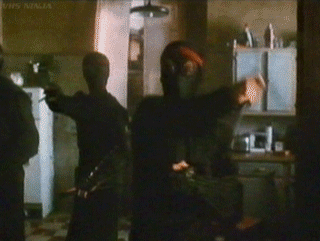
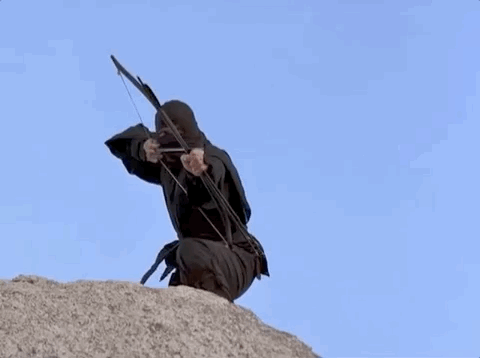
‘Ninja training like this was made to make your body like a suit of armor, trying to make your body handle pain and being hurt, without making a sound to alert enemies of any presence, in order to carry out a mission set. Training would include being beaten and hurt, with the ability of not making much, if not any sound. Such training exercises would include having your toes, ankles, head and hands beaten, which in turn would injure you, but make you more aware of your surroundings, as your body because more sensitive, but after it heals, you would still carry on the movements of your body in that stealthy way, to avoid making any unknown sounds, as your body would have been conditioned to making no sound, so anything out of the ordinary would surprise you and make you more alert to the surroundings and potentially new environments.
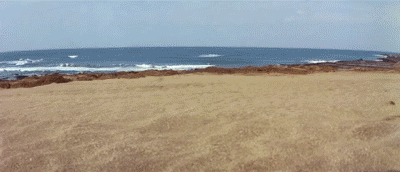
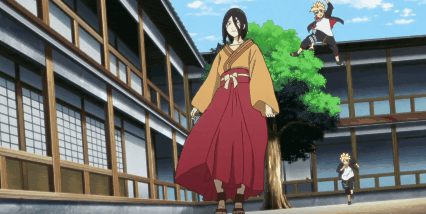

These are some of the screen grabs of what the buckid rig poses, look like

https://youtu.be/-LL6NPUevGk - more information on the ways of learning how to be a ninja...
https://vimeo.com/395945473 - This is my current attempt of a learning process of trying to get a buckid rig to walk, accompanied with some music...
0 notes
Link
NINJA FIGHTING TECHNIQUES 🥷🏻 How To FIGHT against a ONE HAND GRAB for SELF DEFENSE
#youtube#youtube shorts#soke anshu#anshu christa jacobson#budo ryu kai#budo ryu ninjutsu#ninja#ninjutsu#ninpo#bujutsu#budo#kobujutsu#kobudo#taijutsu#ninpo taijutsu#budo taijutsu#bujinkan#genbukan#jinenkan#kenpo#kempo#karate#jujutsu#jujitsu#aikijujutsu#martial arts#self defense
2 notes
·
View notes
Text
Watch "Secret Martial Arts - Series I: GIKAN RYU, GYOKKO RYU & KOTOH RYU TANEMURA-HA" on YouTube
0 notes
Link
Genbukan out soon!
1 note
·
View note
Text
Yamanami Keisuke [shinsengumi-no-makoto]
Vice-commander of the Shinsengumi
Born - 1833 or 1835 in Michinoka, Sendai.
Died - February 23, 1865 in Mibu, Kyoto at either age 33 or 31 [32 or 30].
Names -
Imina - Tomonobu
One of the reasons why there is so little information about Yamanami is that some think this may have been an assumed name. Also, there is a question of how he pronounced his name. According to the way the kanji was read during the Edo period, he may have actually called himself “Sannan”.
Physical Description -
Yamanami was “slightly tall” and had a pale complexion. His face was supposed to be somewhat round.
Personality Quirks and Traits -
He is described as a gentle, amiable man and was very intelligent. He enjoyed reading Chinese poetry. Yamanami was loved by the people of the Mibu neighborhood. Yet despite all of this he could be very severe when he needed to be.
Aside from Kondo, it is said that he got along well with Okita, Todo, and Ito. His exact relationship with Hijikata is the subject of debate.
Family History -
Almost nothing is known of Yamanami’s past. He may have been the second son of a fencing instructor. Another theory is that his father was a lower samurai of the Sendai clan. There was also an opinion that he was the third son of the family.
Martial Skills -
Ryu - Houkushin Itto Ryu
Rank - Menkyo Kaiden
Teacher - Chiba Shusaku, Genbukan dojo
Yamanami is thought to have went to Edo to study in his early teens. He attended one of the three most prestigious fencing schools of era, studying under one of the greatest swordmasters of all time.
According to legend that was not enough to help him defeat Kondo Isami in a match. After losing to Tennen Rishin Ryu, Yamanami decided to retrain under Kondo and entered the Shieikan. This was probably around 1860. Later he was said to have taught classes on Kondo’s behalf.
Shinsengumi Years -
Although he began in the Shinsengumi at the same rank as Hijikata, Yamanami gradually began to fade into the background. Even before Ikeda-ya he was playing no real role in leading the group anymore. The most enduring legend about him is how he met his death.
The most widely known version of the story has it that Yamanami was unhappy with the way Kondo and Hijikata ran the Shinsengumi. He is also said to have felt that they were abandoning their true and original purpose of “Sonno-Joi” or “Revere the Emperor and Expel the Barbarians”. Things began to come to a head after Ikeda-ya, when the other two men began to make plans to move the headquarters from Mibu to the Nishihongan-ji Temple. Although Yamanami complained about it bitterly, saying that it was not an appropriate place for executions and the like, he was ignored. At that point he decided on drastic actions.
Writing a brief note, he left the group without permission on February 22, 1865 [March 19, 1865] and headed to Otsu. As soon they realized that he was gone, Okita took a horse and went after him. An often speculated reason for sending him is that they did not really want for Yamanami to be captured. But at an inn in Otsu, find him Okita did. He was not even trying to really escape. Although the captain is often said to have urged him to flee, Yamanami insisted on being taken back to Mibu to face his punishment.
Some have it that Nagakura and Ito tried to give him a second chance to escape once they returned to headquarters. Again Yamanami declined, saying that he had already made up his mind. At the Maekawa estate the very next day, February 23, 1865 [March 20, 1865], Hijikata ordered Yamanami to commit seppuku. Okita served as his second.
The reasons for his actions are unknown. Some say that he simply wished to die. Others that he wanted his death to serve as a warning to Kondo. However this is only the generally known version of what happened to Yamanami. The truth may have been very different.
First off it is questioned exactly what the nature of Hijikata and Yamanami’s relationship was. Traditionally it has been said that they despised one another. Hijikata would complain that Yamanami was a “fox” and a “pain in the rear” for Kondo. And for his part Yamanami may have been jealous of the close relationship that the other Vice-commander had with the Commander. Yet there is also those who say that the two really respected one another. And there is evidence that this was true, at least before they came to Kyoto. Hijikata is supposed to have dedicated one of his poems to Yamanami while they were at the Shieikan together.
As for the day that Yamanami “escaped”, the samurai of other domains reported seeing many of the Shinsengumi leaving their headquarters. This could mean that Okita was actually not the only one sent to bring him back or it may be that something entirely different may have happened to Yamanami which caused his death.
It is claimed that Yamanami was suffering from some sort of neurosis at the time of his death. This may have been because his physical condition was not so good. There is a story that in 1864, around the time of the New Year’s Holidays, Yamanami went to help Kondo stop a burglar at a shop in Kyoto. It is supposed that he either received a serious wound on his back during this incident or else that he fell seriously ill just afterwards. Which ever one of the two it may have been, something seems to have caused him to no longer be able to participate in the group’s activities afterwards. He was given an “honorary” post at this time because he was forced from the front lines. Unable to do his job, he fell into a gloomy depression.
Apparently his condition was serious enough that he was still unable to fight at Ikeda-ya. Illness is cited as the reason for his absence there. While this raises the possibility that it was a sickness that pushed him to the sidelines after the New Year’s incident, it could have also been due to a deteriorating condition if he had indeed received a physical injury that permanently disabled him. For this reason he felt that he was useless to the group and was no longer able to influence it’s policies. It was this constant brooding over his health and change in circumstances that may have finally led him to take his own life.
The real truth of Yamanami’s death will most likely always remain a mystery.
There were many who regretted his death. He was buried at Kouenji Temple, where he had been on friendly terms with the chief priest. (This was because Yamanami’s family crest and the one the temple used were the same.) Lots of people from Mibu as well as the Shinsengumi members attended his funeral.
Love Life -
Another enduring legend about Yamanami is the love affair he had with a Tenjin of Shimabara named Akesato. (A Tenjin was the second highest ranking class of prostitute at that time in Kyoto.) Although she was not extremely beautiful, she was considered to have been an elegant person. The day that he was to commit seppuku, the ceremony was delayed long enough for Nagakura to run to Shimabara and fetch Akesato. She came to the Maekawa estate and said a final, tearful farewell to him at the lattice window beside the main gate. This is all that is known of Akesato.
The problem is that she may have never existed at all. There is no record of such a person working in Shimabara under that name at the time the Shinsengumi were in Kyoto. It is possible that such records may have been lost over time, but even worse is the fact that the sole source of this story is the work of Shimozawa Kan, who many suspect may have fabricated much of the “history” he recorded about the Shinsengumi. Shimozawa claimed to have seen a record left by Saito Hajime from which he got many of his details about the group, but no one since has been able to find any trace of this book and so his story is suspect. Perhaps just as incriminating is the fact that Nagakura, the person who was supposed to have gone to get Akesato that day, does not mention such an episode at all.
However the issue of whether or not she truly existed will most likely be debated for a long time to come.
2 notes
·
View notes
Text
Basics Of Ninja Training Black Belt Course 10 DVD Ninjutsu Bujinkan Genbukan UFC
$28.50 (5 Bids)
End Date: Saturday Jun-16-2018 14:43:41 PDT
Bid now | Add to watch list
0 notes
Text
KOBUDO KLUB "GENBUKAN MANGETSU DOJO", Zagreb, Držićeva 66
KOBUDO KLUB “GENBUKAN MANGETSU DOJO”, Zagreb, Držićeva 66
View On WordPress
0 notes